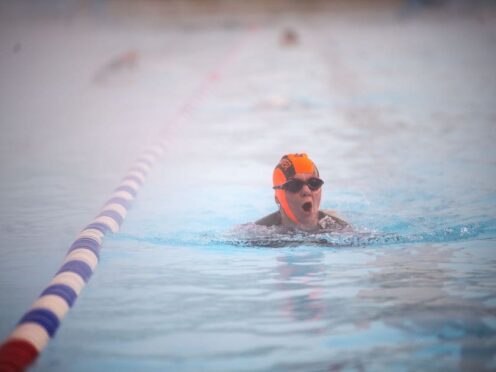A quarter of people in Scotland never do any exercise with the cost-of-living crisis contributing to a divide, new statistics showed.
A survey for the Observatory for Sport in Scotland found that only 46% of the adult population regularly take part in sport or exercise.
Polling revealed a growing economic divide in sport and physical activity levels since the pandemic across 1,029 adults surveyed in January.
The survey, conducted by Survation and commissioned by True North for the Observatory for Sport in Scotland (OSS), found participation is becoming increasingly polarised, with falling rates of activity among those in lower income groups.
The survey found only 36% of adults with incomes under £20,000 per annum take part in regular sport or physical activity, compared to 59% of adults with incomes over £40,000 per annum.
While there is widespread recognition of the health benefits of sport and exercise (79% of respondents), the survey found that only 46% of the adult population in Scotland regularly take part in sport or exercise-related physical activity.
A further 29% take part only occasionally, but a quarter (25%) of adults do not do any sport or exercise at all.
Charlie Raeburn, founding board member of the Observatory of Sport in Scotland said: “While we are pleased to see activity levels bounce back to pre-pandemic levels, we are very concerned about the relatively low levels of participation in sport and physical activity in Scotland as a whole.
“Our biggest concern is that the divide between those who are active and those who are inactive is growing wider along economic lines.
“The numbers show a net 8% fall in the sport and activity levels of those on low incomes, and a net 7% increase in the sport and activity levels of those on higher incomes compared to pre-pandemic levels.
“That widening gap should ring alarm bells, given health inequalities in Scotland and what the significant health benefits of keeping active.
“We need fresh thinking about how to encourage participation right across the age spectrum and across the income spectrum.
“A massive 90% of over 65s believe sport and physical activity is important for their health, but only 35% actually take part regularly.
“Of those that don’t participate, nearly half (46%) say it’s because of existing health issues.
“Among younger adults, 67% of those aged 25-34 years say they are likely to participate less because of cost-of-living pressures, also cited as one of the main barriers to participation among women who are not currently active.
“These should not be insurmountable barriers, but we need a fresh approach.
“At OSS we know that taking part in sport and exercise-related physical activity improves health and well-being at every stage of the life cycle.
“Government at all levels and across all parties needs to take concrete action to tackle the barriers to participation as part of a constructive conversation about Scotland’s deep-seated health inequalities.
“This is not the time to be reducing the provision of sports facilities that help people stay active.
“We need to be supporting community-based opportunities and considering provision through the lens of public health.
“Investment to help people get and stay active through sport and exercise will be beneficial to individuals, communities and the economy in the long term.”
